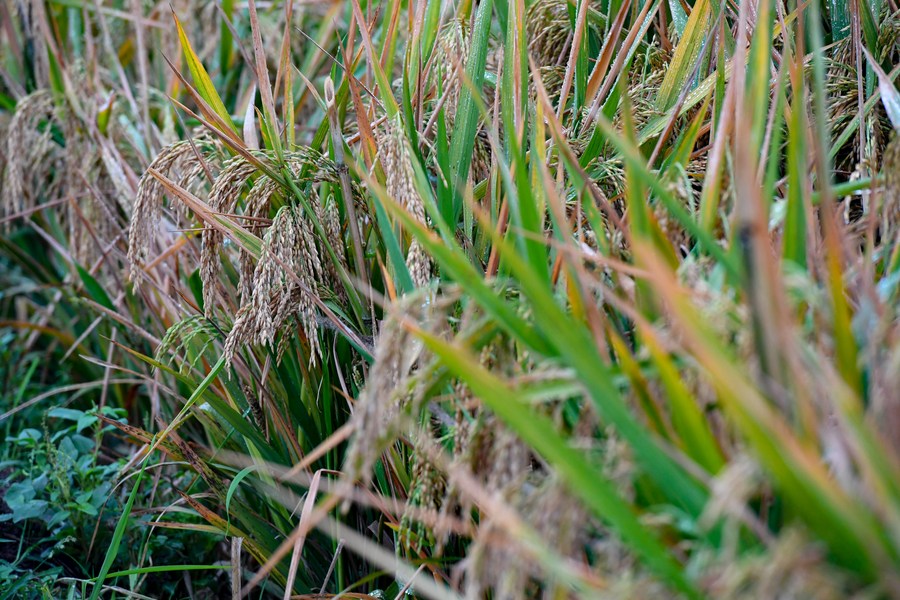 Image taken on Nov. 2, 2020 demonstrates the 3rd-era hybrid rice at an experimental demonstration area in Hengnan County, central China’s Hunan Province. (Xinhua/Chen Zeguo)
Image taken on Nov. 2, 2020 demonstrates the 3rd-era hybrid rice at an experimental demonstration area in Hengnan County, central China’s Hunan Province. (Xinhua/Chen Zeguo)
NANJING, Nov. 20 (Xinhua) — China has introduced the country’s 10 most major improvements in agricultural science and technology. Notably, 5 of them are affiliated with gene-modifying know-how.
The 10 innovations by Chinese agricultural researchers very last 12 months ended up announced at the Discussion board 2020 on Science and Technological innovation for Agricultural and Rural Growth in China, which opened Friday in Nanjing, capital of east China’s Jiangsu Province.
Chinese researchers determined a gene in teosinte, the wild ancestor of maize, and used it to change maize, giving it a narrower kind and increased higher-density maize yields.
In a different analyze, researchers edited 4 genes in hybrid rice and acquired plants that could propagate clonally via seeds. This could enable improve the produce of hybrid rice and improve the sample of crop breeding and the seed business in the future, in accordance to a researcher from the Agricultural Information Institute of the Chinese Academy of Agricultural Sciences.
Scientists also identified that the gene CsBRC1 in cucumber inhibits lateral shoot branching by specifically repressing the auxin efflux provider and lead to greater auxin accumulation in buds. The obtaining offers a approach to breed for cultivars with different degrees of shoot branching grown in various cucumber generation techniques.
The gene-enhancing technological know-how was also used by researchers to acquire broad-spectrum bacterial blight resistance in rice vegetation and investigate an successful and exact phasing of the pear genome into its A and B haploid genomes.
In addition, Chinese researchers unveiled the architecture of the African swine fever virus and implications for viral assembly, laying a foundation for the enhancement of an African swine fever vaccine.
A study team led by Tsinghua College approximated spatial designs of nitrogen discharge into h2o bodies across China from 1955 to 2014 and quantified a nitrogen boundary for the region to proficiently handle area h2o high quality.
Other selected advances include experiments in the virulence of soil-borne fungal pathogens, genome sequencing of significant-scale ruminant and superior-level resistance genes of an vital antibiotic Tigecycline. ■
